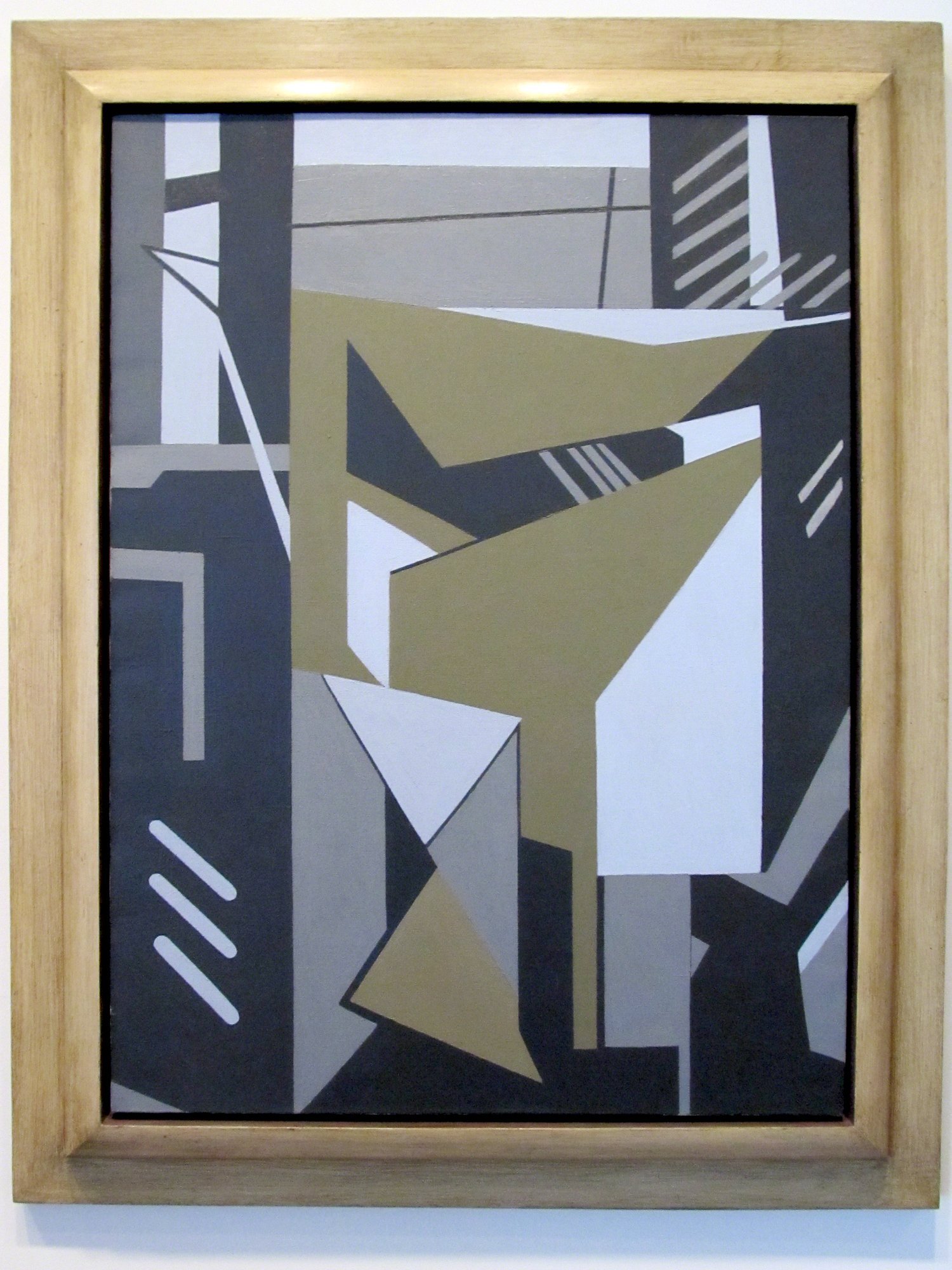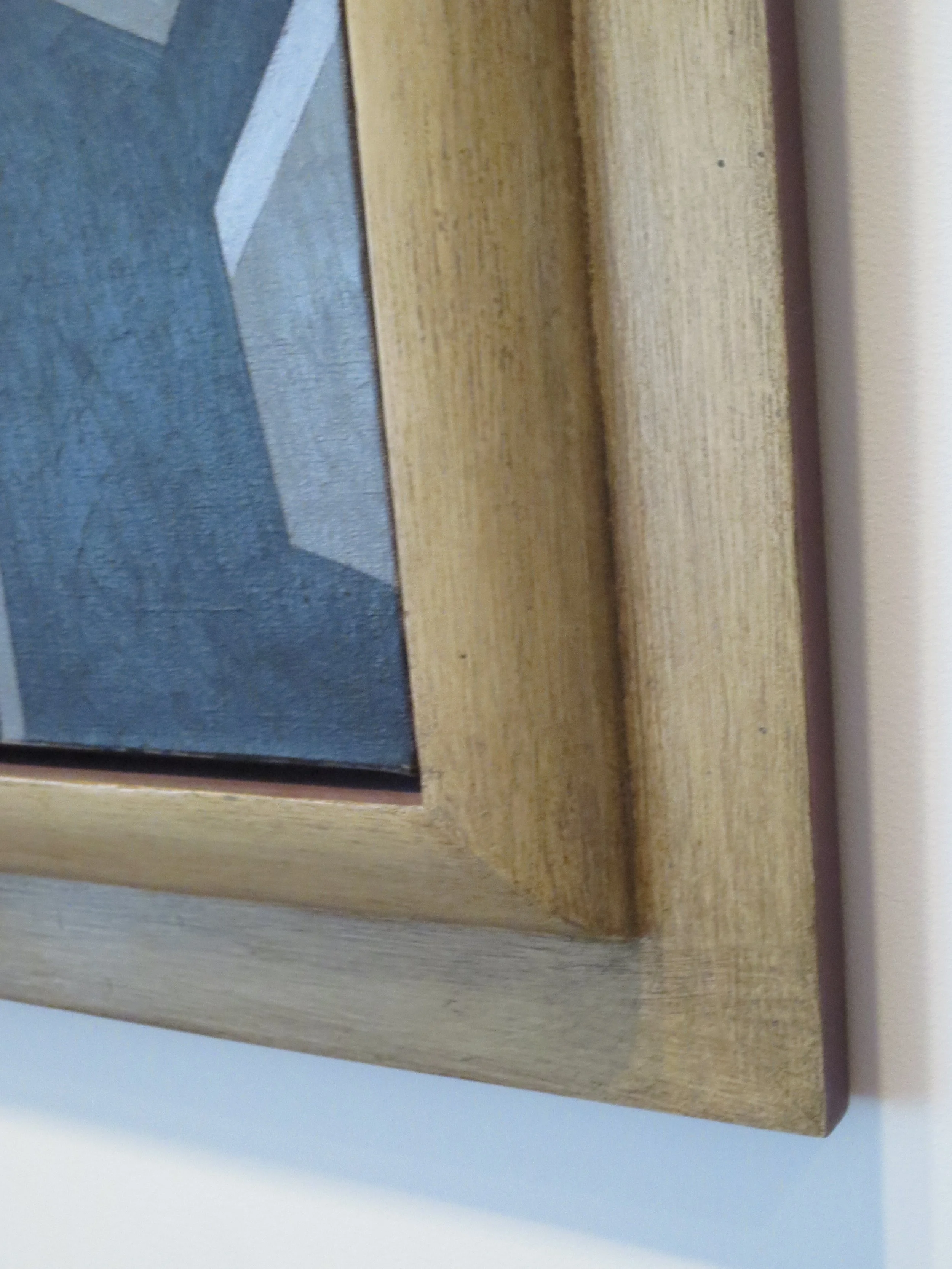RALSTON CRAWFORD

RALSTON CRAWFORD (1906–1978)
Red Barge No. 1, 1942, oil on canvas, 27-7/8" x 39-3/4". Framed by Gill & Lagodich for the Museum of Fine Arts Houston, in a custom-made variation of an early 20th-century American Modernist painting frame; simple, flat artist-made construction; painted wood, antiqued gesso, stone gray patina; molding width: 6” Museum purchase funded by the John R. Eckel, Jr. Foundation.

RALSTON CRAWFORD (1906–1978)
Ships and Sailors, 1938, oil on canvas, 32-1/4 x 40 in. Framed by Gill & Lagodich for Crystal Bridges Museum of American Art. Custom-made replica of c. 1930s American Modernist molding, polychrome finish on gesso on wood, molding width: 3-1/2”



RALSTON CRAWFORD (1906–1978)
Construction No. 5, 1958, oil on canvas, 36-1/8” X 26-1/8”, framed by Gill & Lagodich for the Virginia Museum of Fine Arts; c. 1950s American Modernist painting frame; patinated, painted wood; reverse bolection profile. “Ralston Crawford, like his senior colleague Charles Sheeler, established a critical reputation in the 1930s New York art world with crisply defined Precisionist paintings of the American industrial landscape. However, his most inventive compositions followed the emergence in the late 1940s of abstract expressionism, a movement that all but sidelined the artist’s subjective geometric work. This image dates from a pivotal moment in Crawford’s career when he was perfecting a bold abstract style characterized by a simplified cubism and restricted color scheme. Construction #5 is linked to the Diesel Construction Company (one of the era’s largest general contracting firms), which commissioned ten New York artists to interpret its skyscraper project then rising at 100 Church Street in Lower Manhattan. According to the artist’s son Neelon Crawford, he and his father visited the site on various occasions, “climbing to the highest point possible during the erection of the steel structure.” The experience inspired a series of abstract paintings (as well as drawings and photographs, two examples of which are also owned by the museum), Construction #5 being the most dynamic and pictorially complex.” —museum label

